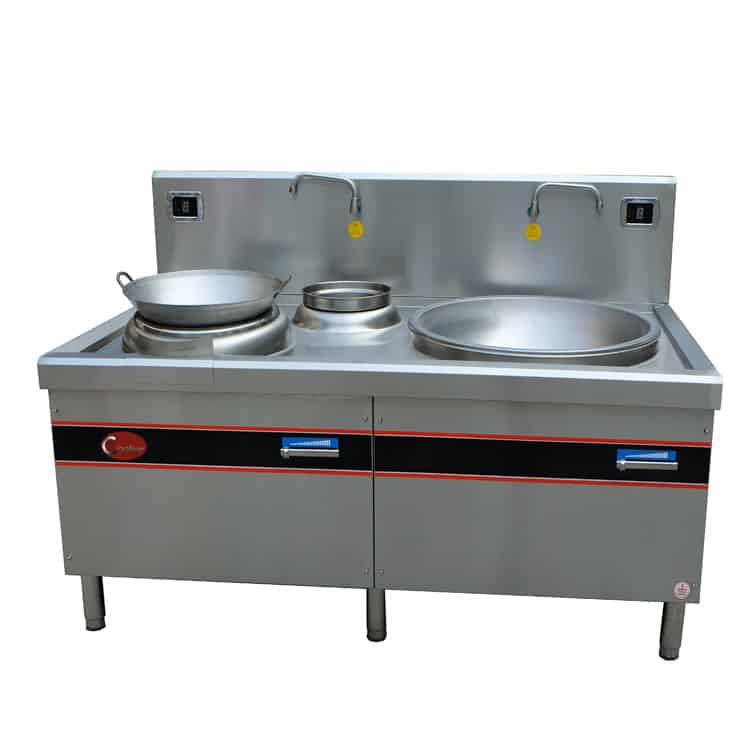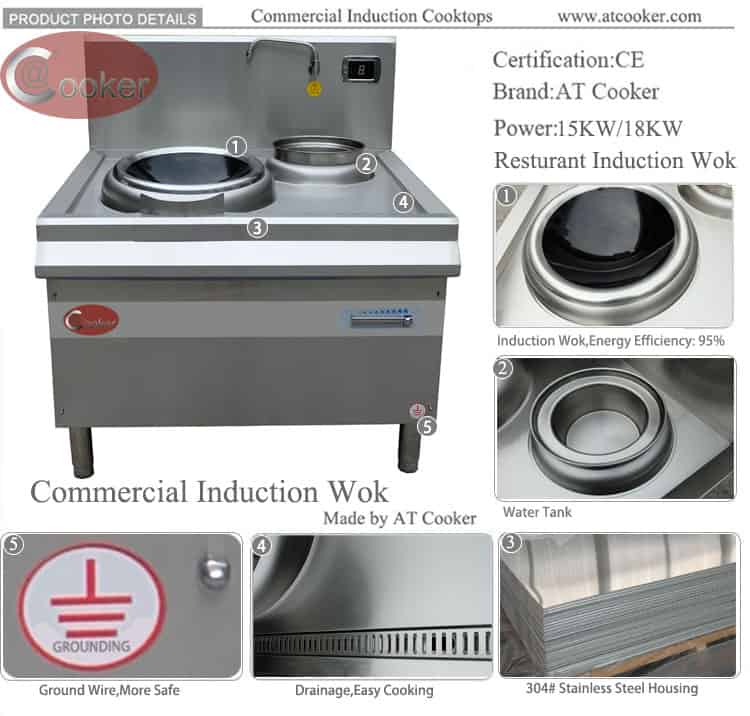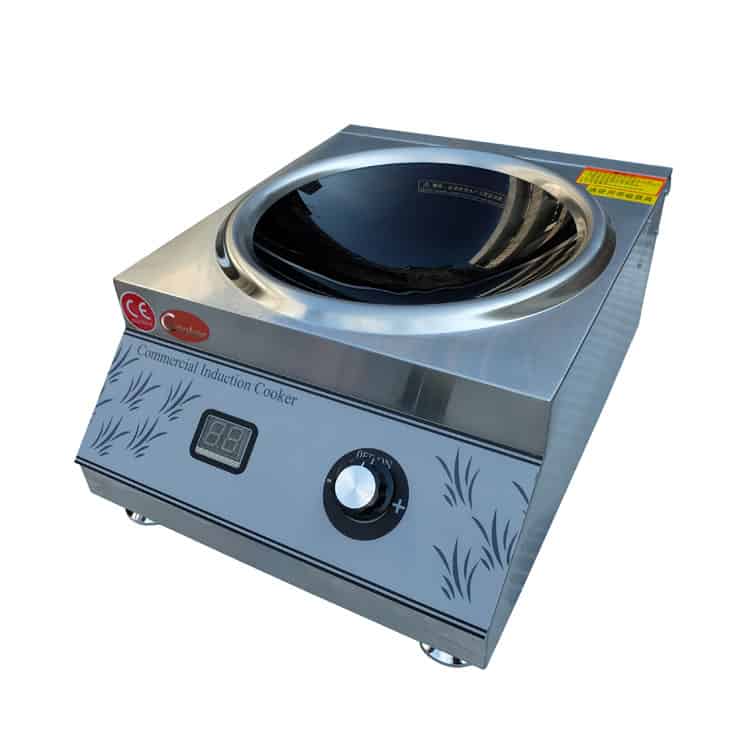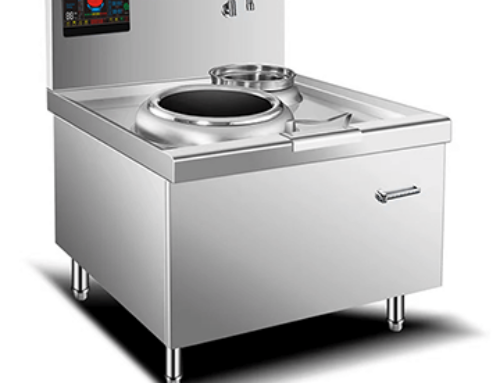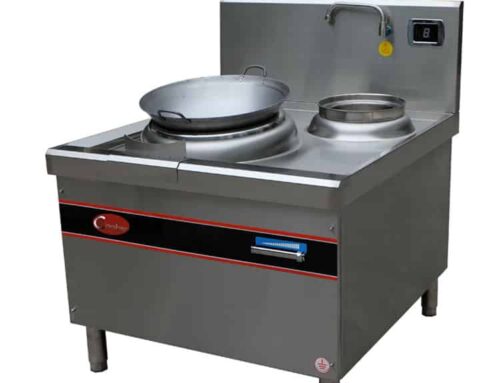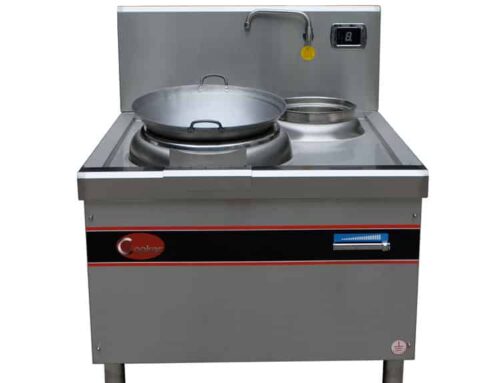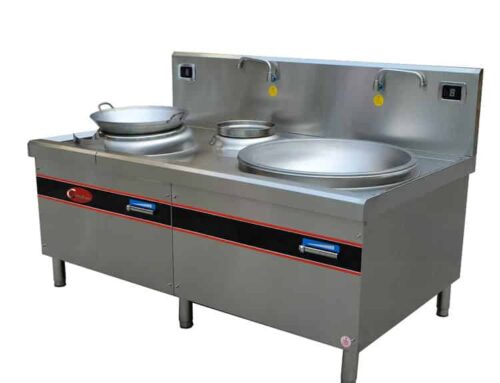What Are the Different Fuel Options Available for Wok Stations, and Which Is Most Efficient?
Wok stations are the heart of Asian restaurants, diners, and commercial kitchens where high-heat stir-frying, searing, and tossing are essential. The fuel powering these stations—whether gas, electric, or induction—directly impacts cooking speed, energy costs, and kitchen safety. AT Cooker’s commercial induction wok models (ranging from 3.5KW to 12KW) redefine efficiency, but each fuel type has unique strengths. Below, we break down the three primary fuel options for wok stations, compare their performance, and explain why induction stands out as the most efficient choice for modern commercial kitchens.
1. Wok Stations Commonly Use Gas, Electric, and Induction Fuel Options
Every commercial wok station relies on one of three fuel sources, each with distinct technology that shapes its performance:
- Gas wok stations: Burn natural gas or propane to create an open flame beneath the wok, reaching ultra-high temperatures (up to 1000°F).
- Electric wok stations: Use heating elements (coils or ribbons) to warm a metal plate, which transfers heat to the wok.
- Induction wok stations: Generate electromagnetic fields to heat ferrous (iron-containing) woks directly, with no intermediate heating element.
AT Cooker’s induction wok stations—like the 12KW commercial model—are engineered to match gas’s high-heat performance while cutting energy use by 50%. A Chinese restaurant in San Francisco switched from gas to our induction wok: “We were skeptical at first, but the induction wok heats just as fast and saves us $200/month on utilities.”
2. Gas Wok Burners Provide Intense, High Heat Ideal for Stir-Frying
Gas wok burners are a traditional favorite for their ability to reach 800–1000°F—critical for “wok hei” (the smoky, charred flavor prized in stir-fries). They use either natural gas (piped) or propane (tanked), with high-BTU outputs (15,000–100,000 BTU) that create powerful flames wrapping around the wok’s curved sides.
Chefs value gas for its responsiveness: “You can crank the heat in seconds for searing, then lower it instantly for simmering,” said a sushi restaurant chef in Los Angeles. This control makes gas ideal for complex dishes requiring rapid temperature shifts.
However, gas has significant drawbacks:
- Low efficiency: Only 30–35% of gas energy converts to heat in the wok—most is lost to the air.
- Ventilation needs: Require powerful hoods ($1,500–$3,000) to remove carbon monoxide and smoke.
- Flame inconsistency: Wind from open doors or fans can disrupt flames, causing hot spots.
3. Electric Wok Stations Offer Consistent Temperature Control and Ease of Use
Electric wok stations use 240V heating elements to warm a flat or curved plate, which transfers heat to the wok. They’re popular in kitchens without gas lines, offering stable temperatures (200–600°F) with digital controls—ideal for beginner chefs or standardized recipes.
Key advantages of electric models include:
- Safety: No open flame, reducing fire risk in busy kitchens.
- Low maintenance: No gas valves or burners to repair—only occasional element replacement.
- Uniform heat: Even distribution across the plate minimizes hot spots.
Their main limitation is slow heat response: “It takes 5 minutes to reach high heat, and adjusting temperature takes 2–3 minutes—too slow for peak hours,” said a fast-casual Asian restaurant owner. Electric wok stations also have lower maximum temperatures (600°F), making them unsuitable for authentic stir-fry “wok hei.”
4. Induction Wok Ranges Heat Cookware Directly, Improving Energy Efficiency
Induction wok ranges—like AT Cooker’s 5KW and 12KW models—use electromagnetic induction to heat the wok itself, not a plate or flame. This direct heating eliminates energy loss, making them far more efficient than gas or electric.
Our induction woks feature 304# stainless steel bodies and German Infineon IGBT modules for stable performance, reaching 800°F in 2 minutes—matching gas’s speed. A takeout restaurant in Chicago reported: “We thought we’d lose the ‘wok hei’ with induction, but customers can’t tell the difference. And our energy bill dropped by $250/month.”
Induction’s “wok detection” feature cuts power when no wok is present, saving an extra 10% on energy. This is critical for busy kitchens where stations may be left idle between orders.
| Fuel Type | Heating Method | Energy Efficiency | Max Temperature | Heat-Up Time (to 800°F) |
|---|---|---|---|---|
| Induction Wok (AT Cooker 12KW) | Electromagnetic direct heating | 90–95% | 850°F | 2 minutes |
| Gas Wok Burner (100,000 BTU) | Open flame heating | 30–35% | 1000°F | 1.5 minutes |
| Electric Wok Station (5KW) | Element → plate → wok | 50–55% | 600°F | 5+ minutes |
5. Gas Wok Burners Are Favored for Quick Heat-Up and High Temperature Output
Gas wok burners heat up marginally faster than induction (1.5 vs. 2 minutes to 800°F) and reach slightly higher temperatures (1000°F vs. 850°F). This makes them preferred for traditional chefs who prioritize极致的镬气 (extreme wok hei) and rapid searing.
However, the temperature difference is rarely noticeable in practice. A culinary school tested both: “Students couldn’t distinguish between stir-fries made on gas vs. induction—both achieved the charred edges we look for,” said the instructor. And gas’s speed advantage is offset by its higher energy waste.
Gas Wok Burner
Energy efficiency
Induction Wok (AT Cooker)
Energy efficiency
Electric Wok Station
Energy efficiency
6. Induction Wok Stations Are the Most Energy-Efficient Due to Direct Heating
Induction’s 90–95% efficiency dwarfs gas (30–35%) and electric (50–55%), translating to significant cost savings. For a wok station used 6 hours daily, operating costs break down as:
- Induction (12KW): 12KW × 6h × $0.15/kWh = $10.80/day = $324/month.
- Gas (100,000 BTU): 6 therms/day × $1.75/therm = $10.50/day = $315/month*.
- Electric (5KW): 5KW × 6h ÷ 0.55 efficiency × $0.15/kWh = $8.18/day = $245/month**.
*Gas cost excludes $150/month for vent hood electricity and $100/year for gas line maintenance. **Electric cost excludes $50/year for element replacements.
When including hidden costs, induction becomes the cheapest: $324/month (induction) vs. $475/month (gas) vs. $253/month (electric, but with lower performance).
— Chen, Chinese Restaurant Owner (San Francisco, CA)
7. Electric Wok Stations May Have Slower Heat Response Compared to Gas
Electric wok stations rely on heating elements that take time to warm up and cool down—making them slow to adjust temperatures. For example, increasing heat from 300°F to 600°F takes 3–4 minutes for electric, vs. 30 seconds for gas or induction. This delay reduces productivity during peak hours.
A fast-food chain testing electric wok stations reported: “We fell 15 orders behind during lunch rush because the electric wok couldn’t keep up. Switching to induction cut wait times by 2 minutes per order.”
8. Gas Wok Stations Require Proper Ventilation Due to Combustion Gases
Gas wok burners produce carbon monoxide, nitrogen dioxide, and smoke—requiring commercial-grade vent hoods with 500+ CFM (cubic feet per minute) airflow. Installation costs $1,500–$3,000, and annual maintenance (filter replacements, fan service) adds $300–$500.
Induction wok stations produce no combustion gases and minimal smoke, needing only basic overhead ventilation (100–200 CFM) or even just a range hood. This saves $1,000–$2,500 upfront for small kitchens.
A food court vendor noted: “The mall wouldn’t let us install a gas wok because of ventilation requirements. The induction wok needs no special hood—we saved $2,000 in permits and installation.”
9. Induction Wok Stations Generate Less Ambient Heat, Enhancing Kitchen Comfort
Gas wok stations release 65–70% of their energy as ambient heat, making kitchens hot and increasing AC costs. Induction stations emit only 5–10% ambient heat (from the wok itself), keeping temperatures cooler.
A restaurant in Miami measured kitchen temperatures during summer: “With gas woks, the kitchen hit 98°F during dinner rush—staff were exhausted. Induction keeps it at 85°F, and our AC bill dropped by $120/month.”
Ambient Heat Impact (6 Hours of Use)
- Induction Wok: Adds 3–5°F to kitchen temperature (minimal AC use).
- Gas Wok: Adds 15–20°F to kitchen temperature (AC runs 50% more).
- Electric Wok: Adds 10–12°F to kitchen temperature (AC runs 30% more).
10. Electric Wok Stations Are Easier to Install in Kitchens Without Gas Lines
Electric wok stations only need a 240V outlet for installation—ideal for kitchens with no gas infrastructure (e.g., food trucks, mall kiosks). Setup takes 1–2 hours ($100–$200 labor), vs. 1–2 days for gas (which requires plumber and electrician visits).
However, electric’s lower performance limits its appeal. “We installed an electric wok in our food truck for convenience, but it couldn’t get hot enough for proper stir-fry,” said a vendor. “Switching to a portable induction wok (with generator power) solved both issues.”
11. Gas Wok Burners Deliver the Traditional Cooking Experience Preferred by Many Chefs
Many experienced chefs prefer gas for its tactile feedback: the sound of the flame, the ability to adjust it with a knob, and the familiarity of decades of use. “Gas feels like an extension of my hand—I can judge the heat by the flame size,” said a master chef in New York.
That said, younger chefs adapt quickly to induction. A culinary graduate noted: “I learned on induction in school—it’s more precise. The learning curve for gas was steeper than switching from gas to induction.”
12. Induction Wok Stations Require Compatible Cookware for Optimal Performance
Induction wok stations need woks with ferrous (iron) bases to work—aluminum or copper woks (without a magnetic layer) won’t heat. This may require investing in new cookware ($50–$150 for commercial-grade induction woks).
AT Cooker offers a compatible 14-inch carbon steel induction wok, pre-seasoned for immediate use. “The included wok heats evenly and develops perfect ‘wok hei’—we didn’t need to buy anything extra,” said a restaurant owner.
13. Energy Efficiency and Safety Considerations Often Make Induction Wok Stations a Top Choice
Induction wok stations outperform gas and electric in two critical areas for commercial kitchens:
- Efficiency: 90–95% energy conversion cuts operating costs by 40–50% vs. gas.
- Safety: No open flame reduces fire risk; cool-to-touch surfaces prevent burns.
AT Cooker’s induction wok stations—available in 3.5KW (countertop) and 12KW (built-in) models—offer the best of both worlds: gas-like performance with induction’s efficiency. Whether you’re a high-volume restaurant or a small takeout spot, induction delivers faster ROI, safer operation, and consistent results.
Find the Most Efficient Wok Station for Your Kitchen
Tell us your daily cooking volume and fuel access—we’ll recommend the best wok station for efficiency and performance.
